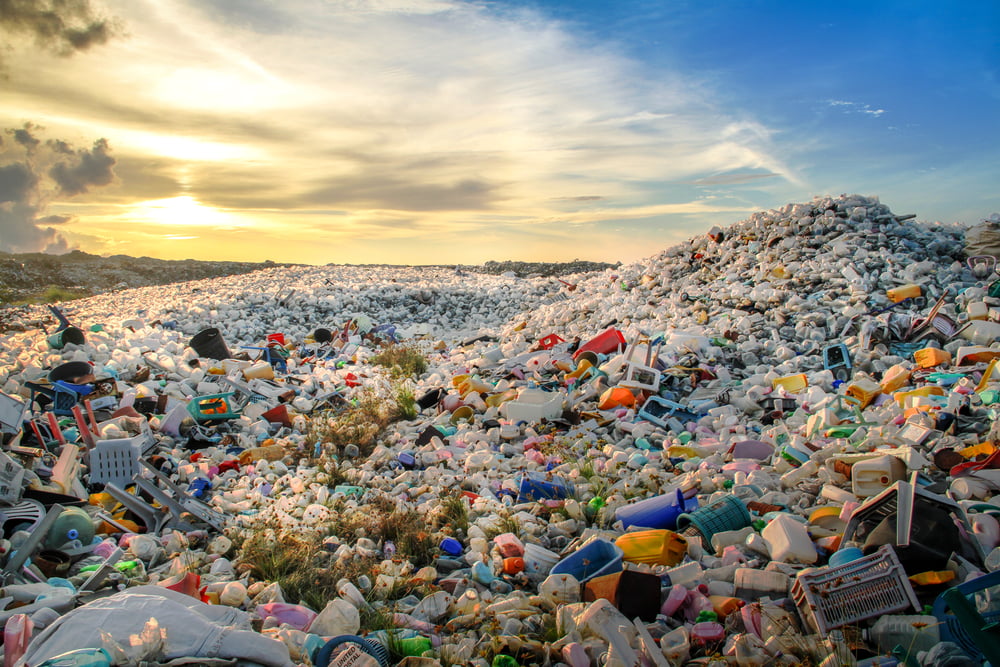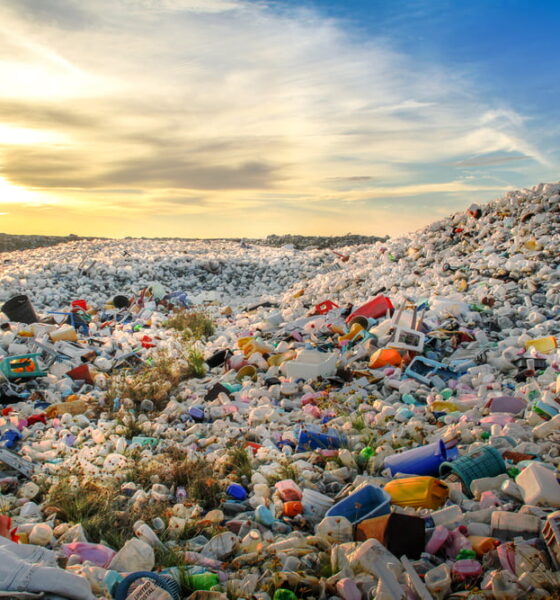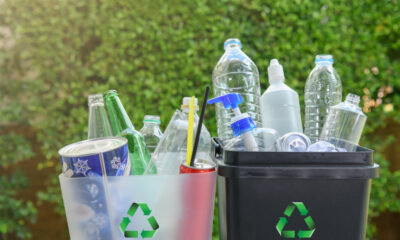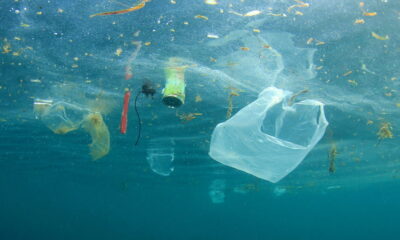

Environment
9 Proven Strategies for Reducing Plastic Waste in Your Home
Plastics are creating real problems for our landfills. In 2018 alone, landfills received over 27 million tons of plastic. Landfills can’t absorb plastics forever.
Do you know how long a tiny plastic bag takes to break down in a landfill? Hint: It takes a long time (like hundreds of years long). Or how many microplastics are being shed from your clothes when you do a load of laundry? Many of us go about our day, not realizing how much plastic waste we’re creating or the devastating effects it has on wildlife, the planet and human health.
Fortunately, the small changes we make in our homes can add up quickly and have the potential to lead to changes on a grander scale. Here are nine ways to eliminate unnecessary plastic in your home and help build the kind of world we all want in the future.
1. Switch to shampoo and conditioner bars
Is your shower stall packed with plastic bottles? It’s time to change that — stat. Switching to plastic-free shampoo and conditioner bars can eliminate four to six plastic bottles that would otherwise end up in a landfill. In addition to coming package-free, these palm-sized pucks are usually packed with botanical ingredients that make hair look healthy and feel silky-soft. Plus, they last longer than their liquid counterparts, which means you save money all while being a good steward of the Earth!
2. Shop with reusable bags
You probably realize plastic bags aren’t great for the planet. However, they are a lot worse than you might think. We covered the terrible impacts of plastic bags on the environment, landfills and human living in this post.
The kitchen is a significant source of single-use plastic waste, especially the pantry. To help cut down on the amount of plastic you’re bringing into your home, do your grocery shopping with a reliable pair of reusable tote bags (pro tip: keep a set in your car so you’re never without them).
Don’t forget to stuff a few reusable mesh produce bags inside your larger tote bags. That way, you can avoid using unnecessary produce bags to store your fruit and vegetables.
3. Ditch bottled water
Much like shampoo bottles, plastic water bottles are an environmental nightmare. According to National Geographic, one million plastic bottles were purchased worldwide every minute in 2017, and the majority of them were not recycled. Swear off bottled water for good by opting for a reusable water bottle made from stainless steel or glass. (If you go for a glass option, make sure it comes with a silicone sleeve!)
If you live in an area with undrinkable tap water, consider using a water filter pitcher. Sure, it’s not completely zero waste. You’ll probably need to replace the filter every month or so. But overall, using a water filter will be less wasteful and less expensive than purchasing bottled H20.
4. Opt for natural fibers
Many people are shocked to learn that their carefully-crafted wardrobe is a likely source of plastic pollution. Indeed, experts estimate that synthetic materials — including polyester, nylon and acrylic — make up about 60 percent of our clothes. Not only does the production of synthetic clothing require a significant amount of energy, but the clothing itself sheds harmful microplastics into the water supply whenever we wash our clothes.
Choose high-quality clothes made from natural fibers, such as certified organic cotton, hemp and linen. If you want to go the extra mile, choose to support and shop from clothing brands (and all brands, really) that have made a commitment to plastic-free packaging.
5. Switch to plastic-free deodorant
Traditional deodorants come packaged in single-use plastic push-up containers that can’t be recycled curbside. Beyond that, a lot of deodorants contain ingredients that many of us would rather avoid, such as parabens, aluminum and synthetic fragrances. To oust bad odors without harming the environment, choose a plastic-free deodorant with compostable packaging. When your deodorant runs out, you can cut up the cardboard and put it into your home compost, where it will eventually break down and go right back into the Earth.
6. Buy in bulk
Do you live near a bulk store? If so, take advantage and shop the bulk aisles. Most bulk stores will gladly let you bring your own container, which you can ask the cashier to weigh for you at the cash register before you start shopping. Besides eliminating the need for wasteful packaging, bulk shopping can save you money because you’re shopping wholesale prices. That’s another win-win for your wallet and the environment! We have another article on minimizing waste at home that talks about the benefits of buying in bulk.
7. Skip the straw
Plastic straws may be small, but their environmental impact is colossal. In the U.S. alone, 500 million straws are used every day. Many of these straws end up in the ocean, polluting the world’s beaches, interfering with marine ecosystems and injuring wildlife.
Turning your back on plastic straws is a small step that can make a big difference to the planet. If you don’t want to give up straws completely, consider swapping your single-use plastic straws for a reusable one made from stainless steel, silicone or glass.
8. Make your own cleaning products
Most cleaning products come swathed in plastic that rarely ever makes it to the recycling bin. Why not skip the plastic bottles and make your own cleaning products instead? In addition to reducing plastic in your home, making your own natural cleaning products can help save you money and get away from nasty chemicals that are dangerous to you and your family. Making DIY cleaners is easier than you might think. For example, you can make a natural, all-purpose cleaner with nothing more than white vinegar, water, lemon juice and lavender essential oil. All you need is a glass spray bottle and you’re good to go!
9. Say goodbye to plastic wrap
Sure, plastic wrap keeps your food fresh and secure until you’re ready to chow down again, but those small pieces of plastic can create more harm than you think. Plastic wrap is made from PVC (polyvinylidene chloride), commonly referred to as the “poison plastic” because it’s jam-packed with dangerous chemicals known to cause cancer and reproductive harm.
Thankfully, there are many plastic wrap alternatives that are free from harmful chemicals and work equally as well. Consider wrapping your sandwiches in beeswax wraps, storing leftover produce in glass containers or using reusable bowl covers to keep your food fresh and secure.
Ease into Green Living
It’s easy to feel overwhelmed when you start the process of eliminating plastic from your home. Remember: You don’t have to make all of these changes at once! Start by focusing on one room at a time, such as the bathroom, and slowly phase out your old products for plastic-free alternatives.


 Environment9 months ago
Environment9 months agoAre Polymer Banknotes: an Eco-Friendly Trend or a Groundswell?

 Environment11 months ago
Environment11 months agoEco-Friendly Home Improvements: Top 7 Upgrades for 2025

 Features8 months ago
Features8 months agoEco-Friendly Cryptocurrencies: Sustainable Investment Choices

 Features9 months ago
Features9 months agoEco-Friendly Crypto Traders Must Find the Right Exchange





























